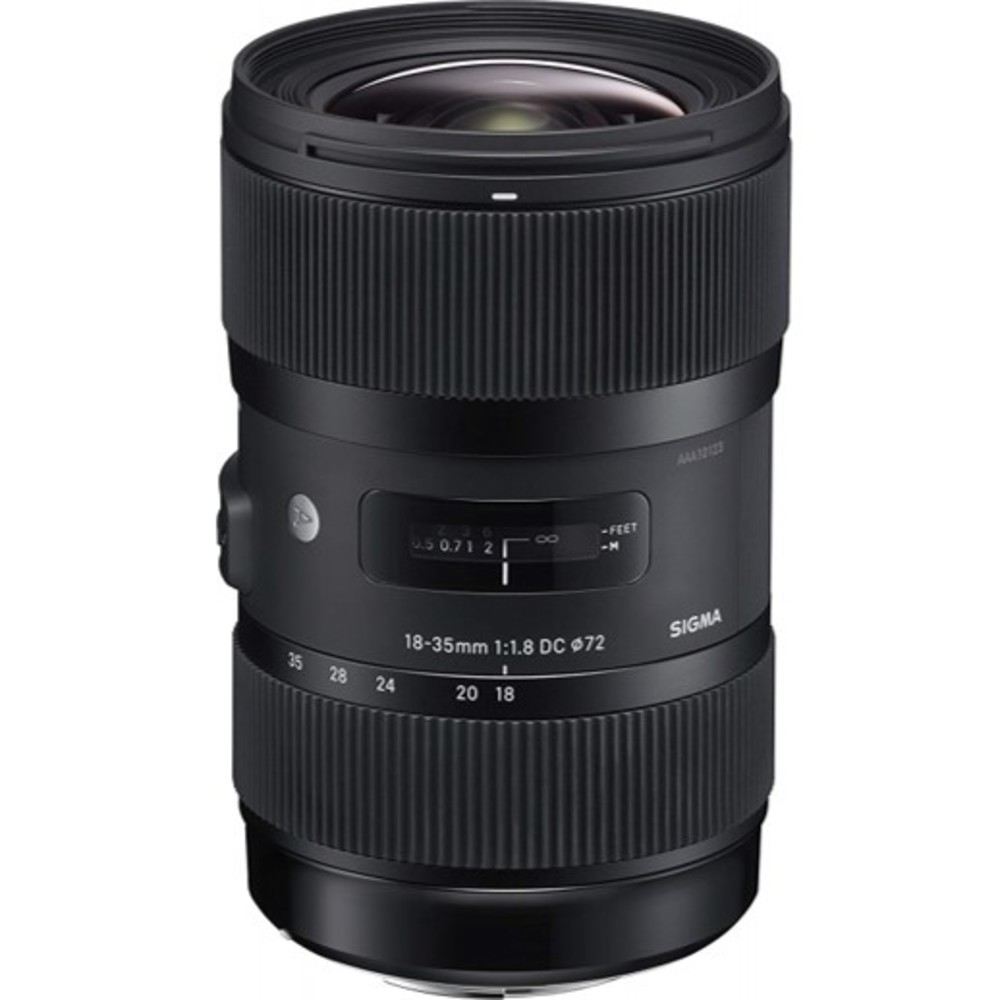
No lens is going to hit every time in exigent circumstances, so I’m pretty satisfied with how the Sigma did here. The performance is on par with what I have found with most good quality lenses on the market, third party or otherwise. In a couple cases, it was just a little slow in finding a subject, by which I mean it took it about one and a half seconds instead of half a second.
#FOCUS PROBLEMS SIGMA 18 35 1.8 SOFTWARE#
In one instance (as you can see below) I had an issue with it front-focusing, but this is easily remedied with the USB Dock and Sigma software (which are very easy to use).Īt night, the lens is a bit less accurate, but it correctly focused (in nearly pure darkness) ten out of thirteen times. It’s fast and, generally speaking, very accurate as all the new Sigma lenses have been. Using this lens is very easy, and the autofocus works, of course, very well in daylight. The entire zoom range is internal, so it doesn’t change sizes on you. It’s a few inches longer than a comparable Canon 18-55mm or Nikon 18-35mm. While on that note, the lens is rather large, especially for what many of you will be used to with this focal range. I hand-held the lens a lot (as opposed to using a tripod) and I have to say I never felt like it weighed too much, which was a fear given the size of the lens. It balances deftly between the two extremes of being too heavy and not feeling like it has a quality build. At 1.78 pounds, the lens has heft, but it’s not what I would call heavy. It’s a gorgeous blend of metal and rubber with only a few plastic parts. It’s built just like the 35mm f/1.4, and that’s a good thing. As I mentioned in my first look back in May, this lens is beautiful. Once we get past the physical limitations of the lens, we can really start to appreciate its build. Are you a bad photographer if you don’t have one? That’s absurd.
#FOCUS PROBLEMS SIGMA 18 35 1.8 FULL#
I personally think that though the full frame sensors are nice, their impact and necessity are generally overstated. It is designed specifically for cameras with APS-C sensors, which means you can’t fit it on your 5D MKIII or D800. Please click on images below to get the full resolution with proper color and contrast.įor starters, as many of your know, this is not a full frame lens. You can still spot some traces at f/4 although it's not really relevant here anymore.As a note, most images below have been downsampled by our content management system to allow for easy and fast loading, but this does affect image quality. As to be expected the effect is most pronounced at f/1.8 and decreases the more you stop down. Just like most of ultra-large aperture lenses the Sigma is also affected by this. It can show up as purple halos in front of the focus point and greenish halos in the background. While this may not sound impressive, the quality of the blur in the focus transition zone is actually very good (smooth) for a standard zoom lens - both in the background and foreground.īokeh fringing is an axial color fringing effect.

"Cat's eyes" in the image corners are not so much of an issue surprisingly although you can spot a slight deterioration at f/1.8. The circular shape remains mostly intact till about f/4 (tested at 35mm).

Out-of-focus highlights show a near-circular shape at large aperture settings but the inner zone of these discs is clearly nervous. However, to be fair - this applies to most standard zoom lenses. The Sigma is pretty good but it has its issues here. While not a number game, the quality of the bokeh (out-of-focus blur) is a major aspect for an ultra-large aperture lens. They remain below 1px on the average at the image corners at 18mm and 24mm and are negligible at 35mm. Lateral chromatic aberrations (color shadows at harsh contrast transitions) are low and not disturbing. If you want to know more about the MTF50 figures you may check out the corresponding Imatest Explanations The chart shows line widths per picture height (LW/PH) which can be taken as a measure for sharpness. Please note that the MTF results are not directly comparable across the different systems!īelow is a simplified summary of the formal findings. The centering quality of the tested sample was good. At f/8 you may spot a slight downturn due to diffraction but this is still rather irrelevant here.

However, the glory doesn't stop here - the borders are easily on a very good level at large apertures and even touch excellent levels at medium aperture settings. The center performance is already excellent at f/1.8 but downright outstanding between f/2.8 and f/5.6. The Sigma 18-35mm f/1.8 DC HSM | A produced nothing short of stunning resolution figures in the MTF lab. However, the issue is mostly resolved at f/2.8 and gone beyond. This also applies to the Sigma - the vignetting varies around the 1.5EV (f-stop) mark at f/1.8. Ultra-low aperture lenses tend to show heavy light falloff at max.


 0 kommentar(er)
0 kommentar(er)
